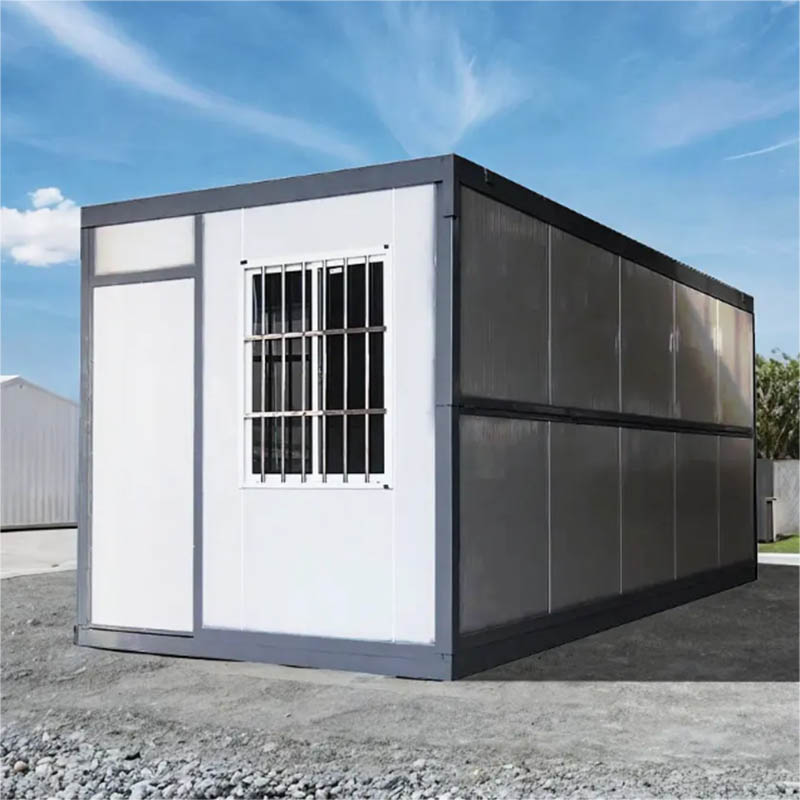Why Are Homestay Mobile Houses Becoming the Future of Flexible Living?
2025-11-26
A Homestay Mobile House represents a new generation of flexible, modular, and moveable living units designed to meet the rising demands of short-stay tourism, eco-friendly resorts, off-grid rentals, and temporary housing solutions. Built with structural durability, comfort-driven interior designs, and transportable mobility, it supports both hospitality providers and land developers seeking fast deployment and high-value accommodation assets.
What Key Specifications Define a High-Performance Homestay Mobile House?
The following parameters outline the engineering, comfort, and performance standards adopted by leading manufacturers:
| Category | Specifications |
|---|---|
| Overall Dimensions | Length 6–12 m; Width 2.4–3.3 m; Height 2.6–3.1 m |
| Structural Frame | High-strength galvanized steel frame; anti-corrosion coating |
| Wall System | Composite insulation panels; rock wool or polyurethane core |
| Roof Design | Waterproof multi-layer roof with heat insulation and drainage system |
| Flooring | Waterproof PVC, laminate wood, or ceramic tile options |
| Power Supply | 110/220V system; optional solar integration |
| Plumbing System | PEX piping; integrated hot & cold water module |
| Interior Layout | Bedroom, bathroom, kitchenette, living space (customizable) |
| Thermal Efficiency | R15–R25 depending on insulation type |
| Mobility | Detachable chassis; forklift pockets or trailer-ready platform |
| Fire Rating | Class A/B fire-resistant material configurations |
| Lifespan | 15–25 years under standard maintenance |
These specifications ensure the structure can handle diverse climates, support year-round occupancy, and meet safety requirements across global markets.
Why Are Homestay Mobile Houses in High Demand Across Tourism, Land Leasing, and Housing Markets?
Rising Short-Stay and Experience-Based Tourism
Travelers increasingly seek private, nature-immersive stays that traditional hotels cannot provide. Homestay Mobile Houses allow operators to place comfortable units near lakes, mountains, beaches, and forest parks without permanent construction. This lowers entry costs while expanding hosting opportunities.
Fast Deployment and Minimal Land Impact
With no need for deep foundation work, units can be transported and placed in a matter of hours. Tourism parks, campsites, and pop-up events benefit from the ability to scale up during peak seasons and reposition units when demand shifts.
Lower Investment and Faster ROI for Property Owners
Compared with building cottages or resort villas, Homestay Mobile Houses significantly reduce construction time and initial capital expenditure. Operators typically recover costs within 1–3 years due to high occupancy rates in scenic destinations.
Customizable Interior for Comfort-Driven Guests
Customization options—panoramic windows, smart lighting, compact kitchens, spa-style bathrooms—meet the expectations of travelers who want boutique-quality living in remote locations.
Eco-Friendly and Energy-Efficient Solutions
The use of insulated wall systems, low-energy HVAC, and renewable power options supports ESG strategies and government-supported green tourism development.
Multi-Industry Applications Beyond Hospitality
Homestay Mobile Houses are increasingly used for:
-
Temporary worker accommodations
-
Emergency housing after natural disasters
-
Backyard rental units
-
Student housing extensions
-
Mobile offices and event spaces
Their adaptability makes them an asset for cities and private developers navigating land shortages and rising construction costs.
How Do Homestay Mobile Houses Deliver Reliable Performance in All Seasons and Environments?
Structural Integrity and Extreme-Weather Resistance
The steel frame distributes loads evenly, reducing deformation under heavy snow or high wind conditions. Wall panels with rigid insulation maintain indoor temperatures even in cold-climate regions.
Comfortable Interior Ecosystem
Ventilation systems, thermal insulation, noise reduction materials, and ergonomic layouts improve the overall living experience. Guests enjoy hotel-standard comfort but with the privacy and natural scenery of a standalone accommodation.
Mobility and Installation Efficiency
A typical homestay unit can be transported by flatbed truck and installed using a forklift. Electrical and water connections are pre-configured for quick hookup, allowing rapid site activation.
Long-Term Maintenance Advantages
Galvanized structures resist corrosion and moisture damage. Replaceable wall panels and modular plumbing reduce long-term maintenance costs, increasing return on investment for property operators.
Smart Technology Integration
Optional features include:
-
Smart locks
-
App-controlled lighting and temperature
-
Energy monitoring systems
-
Remote guest access management
These features appeal to modern travelers and simplify operations for hosts managing multiple units across various locations.
What Future Trends Will Shape the Next Generation of Homestay Mobile Houses?
Rise of Off-Grid Living Solutions
Solar panels, battery storage, composting toilets, and rainwater recycling systems will allow mobile houses to operate fully off the grid. This supports eco-resorts and remote tourism sites.
Smart Home Ecosystem Expansion
Integration with cloud-based property management systems will enable real-time occupancy tracking, automated cleaning schedules, and centralized guest communication.
Resort Clustering and Modular Expansion
Modular units will form interconnected clusters for group travel, providing shared amenities like decks, kitchens, lounges, and fire pits.
Increased Government Support for Prefabricated Housing
Many regions face labor shortages and rising construction costs. Prefabricated mobile houses offer an economical solution, encouraging policies that simplify permitting and zoning.
Hybrid Models for Residential Use
Mobile houses will gradually enter the mainstream residential rental market as backyard ADUs, senior-friendly extensions, or micro-living communities.
Frequently Asked Questions About Homestay Mobile Houses
Q1: How durable is a Homestay Mobile House in extreme weather?
A Homestay Mobile House is built with a reinforced steel frame, insulated wall panels, and a multi-layer waterproof roof, enabling it to withstand high winds, heavy rain, and snow loads. The materials are selected for anti-corrosion performance, and the structure uses industrial-grade connectors that ensure long-term stability. With proper site leveling and maintenance, the unit can operate safely in both cold and hot climates year-round.
Q2: What utilities are required for installation?
A standard Homestay Mobile House connects to electricity, water, and sewage systems using pre-installed interfaces. These ports are engineered for quick attachment, allowing fast deployment even in remote locations. For off-grid scenarios, optional solar kits, battery systems, and standalone water solutions support independent operation without reliance on public utilities.
Why Hospitality Providers and Developers Choose Yilong’s Homestay Mobile Houses
Across tourism parks, rental communities, and private resorts, Yilong’s Homestay Mobile Houses have built a reputation for reliability, comfort, and long-term performance. With precision engineering, customizable interior layouts, and durable structural components, these units serve as cost-effective assets for anyone seeking scalable accommodation solutions.
Yilong continues to innovate in insulation systems, smart technology integration, and eco-friendly materials, making the product suitable for global climate conditions and diverse business models. For project consultations, layout customization, and bulk order solutions, contact us to discuss the best Homestay Mobile House configuration for your development needs.



